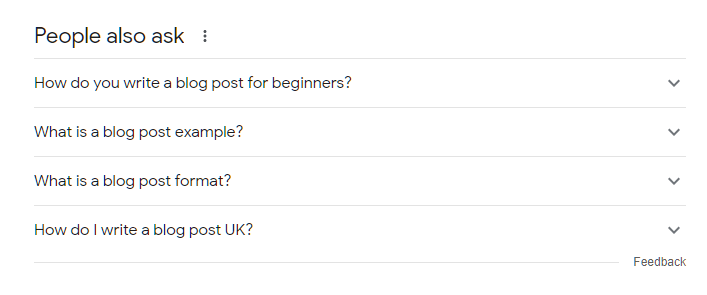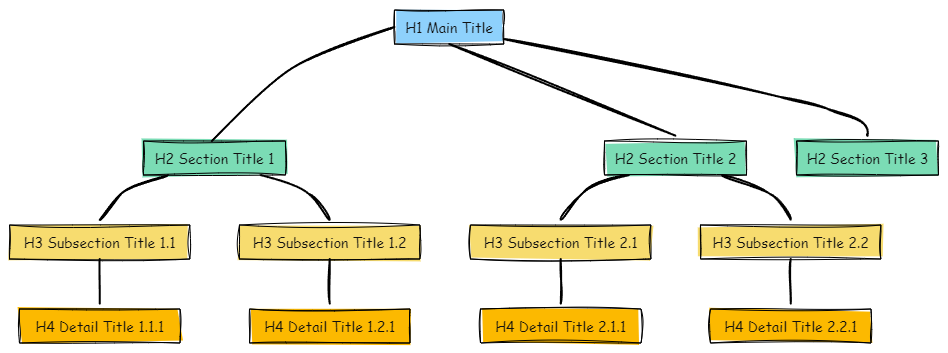Content Is King: Crafting Blog Posts That Rank High and Convert More
January 29th, 2024

In the vast ocean of digital content, your blog post is the rare pearl that can transform a casual browser into a dedicated follower, or even better, a loyal customer. You know the stakes are high in the content game, and crafting blog posts that don't just rank well but also persuade and convert is nothing short of an art form.
As you navigate the complex currents of SEO and user engagement, it's crucial to master the subtle dance between keywords that resonate with search engines and narratives that spark action in your readers. What you may not realize is that there's a formula to this magic—a blend of time-tested techniques and cutting-edge insights that can elevate your content from good to exceptional.
Stick with me, and I'll reveal the strategies to turn your words into gold, and why understanding the alchemy of high-ranking, high-converting blog posts could be the game-changer you've been looking for.
Key Takeaways
- Understanding search intent and conducting keyword research is crucial for crafting blog posts that rank high and convert more.
- Optimizing content structure and crafting magnetic headlines are essential for grabbing readers' attention and guiding them to quality content.
- Visual storytelling techniques, such as using images, infographics, and videos, can simplify complex information, increase visibility, and improve engagement.
- Enhancing readability and flow by using transition words, varying sentence lengths, breaking content into digestible paragraphs, and incorporating lists can enhance the user experience and make the content more engaging.
Remember, creating blog posts and other online brand building activity take a lot of time. If you're more interested in running your business, consider taking our Brand Builder service and let us do this hard work for you.
Understanding Search Intent
To captivate your audience effectively, you must first grasp their search intent, ensuring your content aligns precisely with what they're seeking.
Recognizing the different types of search intent - informational, navigational, transactional, and commercial investigation - is crucial to delivering relevant content that resonates with your target audience.
It's about understanding the 'why' behind the query, and tailoring your posts to answer their specific needs and questions. For example, if you search Google for 'How to write a blog post' you'll be rewarded with a set of People Also Ask questions, and this tells you exactly what information people are searching for.

By honing in on the right search intent, you're not just aiming for a fleeting visit; you're enhancing the user experience, fostering trust, and nudging visitors closer to conversion.
Your keyword research should be meticulous, focusing on terms that accurately reflect the intent behind the searches.
This strategy ensures that search engines see your blog as a valuable resource, potentially boosting your position in search results.
Mastering Keyword Research
To climb the search engine ranks, you must pinpoint the exact keywords your audience is searching for.
Leverage sophisticated keyword tools to uncover the terms that will drive targeted traffic to your blog.
Identifying Target Keywords
Mastering keyword research is crucial, as it ensures your content resonates with both search engines and your target audience. You need to identify keywords that are central to content creation and SEO. Integrate these terms strategically into titles, headings, and body text to optimize your content so it ranks well.
Engaging content that meets user intent hinges on the use of relevant keywords. Long-tail keywords, which are more specific and often less competitive, can be particularly effective in attracting the right audience.
Here's a table guiding keyword integration:
|
Keyword Type |
Implementation Strategy |
|
Short-tail |
Titles, Meta Descriptions |
|
Long-tail |
Subheadings, Body Text |
|
LSI Keywords |
Throughout Content |
|
Geo-targeting |
For Local SEO |
|
Intent-based |
Align With Audience Expectation |
Utilizing Keyword Tools
Leveraging powerful keyword tools is essential for pinpointing the exact terms that will elevate your blog's SEO and draw in your ideal readers. As you dive into content marketing, remember that the right keywords are the linchpin of any strategy aimed at ranking well.
These SEO tools don't just suggest popular search terms; they offer a window into your audience's desires, guiding you to create content that resonates deeply.
Armed with these insights, you'll craft blog posts that not only captivate but also convert. By strategically embedding these keywords into your titles, headings, and body text, you ensure that your valuable content reaches the right people.
Optimizing Content Structure
To climb the SEO ladder, you'll need to structure your posts with a clear hierarchy of headings that guide readers through your content.
Bullet points break down complex information, making it easier for your audience to digest and remember key points.
Don't forget to sprinkle in visual elements; they keep users engaged and can significantly boost your content's shareability.
Hierarchy of Headings
Understanding the hierarchy of headings is essential for structuring your blog post in a way that's both reader-friendly and SEO-effective. Crafting blog posts with a clear structure not only helps your audience digest your content but also signals to search engines the importance of your topics, which can help your long-form content rank well.
- Hierarchy of Headings:
- H1: Reserve for your main title—make it compelling.
- H2: Use for main sections—integrate keywords wisely.
- H3: Employ for sub-sections—focus on niche topics.
- H4: Apply for finer divisions within sub-sections—provide detailed information or examples.

In your content strategy, prioritize hierarchy to create original, useful content that offers valuable information. Focusing on quality, utilize headings to guide readers through your argument or narrative, ensuring they grasp the control they seek over the information they consume.
Utilizing Bullet Points
When crafting high-impact blog posts, incorporating bullet points can significantly enhance readability and highlight crucial information, making your content more digestible and SEO-friendly. Remember, content is still king, and how you structure it can make or break its success.
Here's how to wield bullet points effectively:
- Create a content calendar to plan posts that engage through clarity and organization.
- Employ storytelling techniques, using bullets to outline success stories or key takeaways.
- Provide valuable insights succinctly, making complex data accessible.
- Use bullets to break up text and create entry points for skimmers.
Incorporating Visual Elements
Elevate your blog's appeal by incorporating visual elements like images, infographics, and videos to captivate readers and improve content structure. These multimedia elements not only break up dense text but also enhance the storytelling of your post. They're essential in a Web Design that's responsive and displays well on various screen sizes.
Here's how to use them effectively:
- Images and Videos
- Boost Engagement: Choose relevant, high-quality visuals.
- SEO Advantage: Optimize alt-text for search engines.
- Infographics
- Simplify Information: Turn complex data into easy-to-understand visuals.
- Interactive Elements
- Increase Dwell Time: Embed quizzes or polls to engage.
- Google's Featured Snippets: Create content that could be showcased.
Crafting Magnetic Headlines
Craft a headline that instantly captures attention, and you're halfway to winning your reader's engagement. As you dive into the digital marketing world, remember that content is king, but a monarch can't reign without a crown. Your headline is that crown. It's critical in crafting a post that not only ranks high but also converts.
Your headline must resonate with your target audience. It should be a beacon, shining through the crowded social media feeds and search engine results, guiding readers to your quality content.
Think of it as your first—and sometimes only—sales pitch. It needs to be concise, packed with relevant keywords, and laced with emotional triggers that make the reader feel in control and compelled to click.
Don't leave this to chance. A/B test different headlines to discover what resonates best. Analyze the data and optimize accordingly. The most impactful headlines are often those that strike a balance between SEO-appeal and human curiosity.
Incorporating Visual Elements
Having established the importance of a magnetic headline, let's now enhance your blog's appeal by integrating compelling visual elements that not only retain attention but also improve your SEO and conversion rates. As part of your digital marketing strategy, incorporating visuals is essential. They make your content not only more engaging but also more comprehensive.
To ensure your blog stands out, consider these visual storytelling techniques:
- Images and Infographics
- Simplify complex data
- Facilitate quick comprehension
- Act as shareable assets that increase visibility
- Videos
- Offer in-depth explanations
- Encourage longer page visits, reducing bounce rates
- Improve storytelling by showing real-life applications or testimonials
- Interactive Elements
- Engage users with quizzes or polls
- Provide responsive content for mobile devices
- Enhance page experience, a key factor in well-designed websites
Enhancing Readability and Flow
To captivate your readers and keep them scrolling, skillfully weave transition words and phrases into your content, enhancing the natural flow between ideas. Mix up sentence lengths and structures to create a rhythm that's engaging. Remember, content is king, but how you present that content matters just as much.
Responsive design isn't just for layouts; it's for text too. Break your content into digestible paragraphs, use subheadings to guide users, and incorporate lists where appropriate. These best practices are your toolkit for enhancing readability and driving more traffic.
Storytelling techniques aren't just for novels. They build trust and connect with your audience on a deeper level. Show don't tell, and let your content resonate with a desire for control. Here's how you can apply these principles:
| Best Practices | Why It Works | Your Action Items |
|---|---|---|
| Transition Words | Smooth Reading | Add between thoughts |
| Varied Sentence Length | Maintain Interest | Mix short and long |
| Subheadings | Easy Navigation | Organize sections |
| Bullet Points | Clarity and Precision | List key points |
Keep these strategies in mind, and you'll not only enhance the user experience but also optimize for conversions.
Building Backlinks Strategically
While enhancing readability and flow is crucial for engaging your audience, strategically building backlinks is key to amplifying your content's reach and improving your search engine rankings. In the world of digital marketing, 'Content is King,' but without a throne of reliable backlinks, your content might never rule the search engine kingdom.
When crafting your backlink strategy, consider these points:
- Quality over quantity:
- Reach out to authoritative sites within your niche.
- Focus on relevance to build trust with users and Google's algorithm.
- Diverse Sources:
- Guest posting on industry blogs.
- Engaging in relevant forums and discussions.
- Creating shareable, link-worthy content.
- Outreach:
- Connect with influencers for potential endorsements.
- Offer valuable content to industry leaders in exchange for a backlink.
- Utilize social media to nurture relationships with peers.
Measuring Content Performance
Understanding how your content performs is essential for optimizing your strategy and ensuring you're connecting with your audience effectively. To ensure content is king in your domain, measuring content performance must be a cornerstone of your approach. By analyzing metrics such as bounce rates, page views, and time spent on your site, you gain valuable insights into how engaging and effective your content truly is.
Keep a sharp eye on social shares and backlinks; they're strong indicators of your content's reach and the authority it's amassing. Google's algorithm takes these factors into account, so they directly influence your ability to rank high.
Don't just track visibility; monitor the relevance of your content by analyzing keyword rankings and organic traffic. These metrics will tell you if you're hitting the mark or if your content reigns need a strategic pivot to meet your audience's search intent.
Lastly, conversion rates and lead generation figures are the ultimate test of whether your content can convert more prospects into customers. They reflect the tangible impact of your content on your business goals. Take command of these metrics, refine your content accordingly, and watch your digital kingdom thrive.
Encouraging Audience Engagement
Engaging your readers is crucial for boosting your blog's community and keeping visitors coming back for more. To make it easier for your audience to connect with your content and brand's voice, aim to create posts that not only inform but also involve your readers.
Here's how you can encourage audience engagement:
- Content: Create with Your Audience in Mind
- Use storytelling techniques to make customers find a piece of themselves in your narratives.
- Focus on providing solutions to their problems, making each post valuable and actionable.
- Encourage interaction by:
- Asking thought-provoking questions to spark conversation.
- Hosting polls, surveys, and quizzes for direct feedback.
- Creating contests and challenges to keep your audience excited and involved.
Frequently Asked Questions
What Does the Phrase Content Is King Mean?
"The phrase means you'll dominate your niche by evolving content, engaging audiences, and weaving brand stories with a strong value proposition, strategic distribution, multimedia, an authentic voice, and solid SEO principles."
Why Is Content Said to Be King?
Content's crowned king because it rules with audience engagement and information value. Your strategic storytelling and authoritative voice boost shareability, forging emotional connections that have viral potential. It's your empire's key to online dominance.
How Do You Rank Blog Content?
To rank your blog content, you'll need to master keyword research, on-page SEO, and content structure. Ensure mobile optimization, update for content freshness, and foster a solid backlink strategy to boost user experience and social sharing.
How Do You Write a High Converting Blog?
To write a high-converting blog, you'll need engaging headlines, compelling introductions, and visual elements that captivate your target audience. Include strong calls to action, employ SEO practices, enhance user experience, and promote your content strategically.
Final Thoughts
With these game-changing strategies, you're now poised to dominate the digital realm.
Watch your blog posts soar to the top of search results, magnetize traffic, and convert readers like never before. Remember, your content's not just king—it's the emperor of the online universe.
Keep measuring, engaging, and optimizing.
The throne of digital success awaits you!